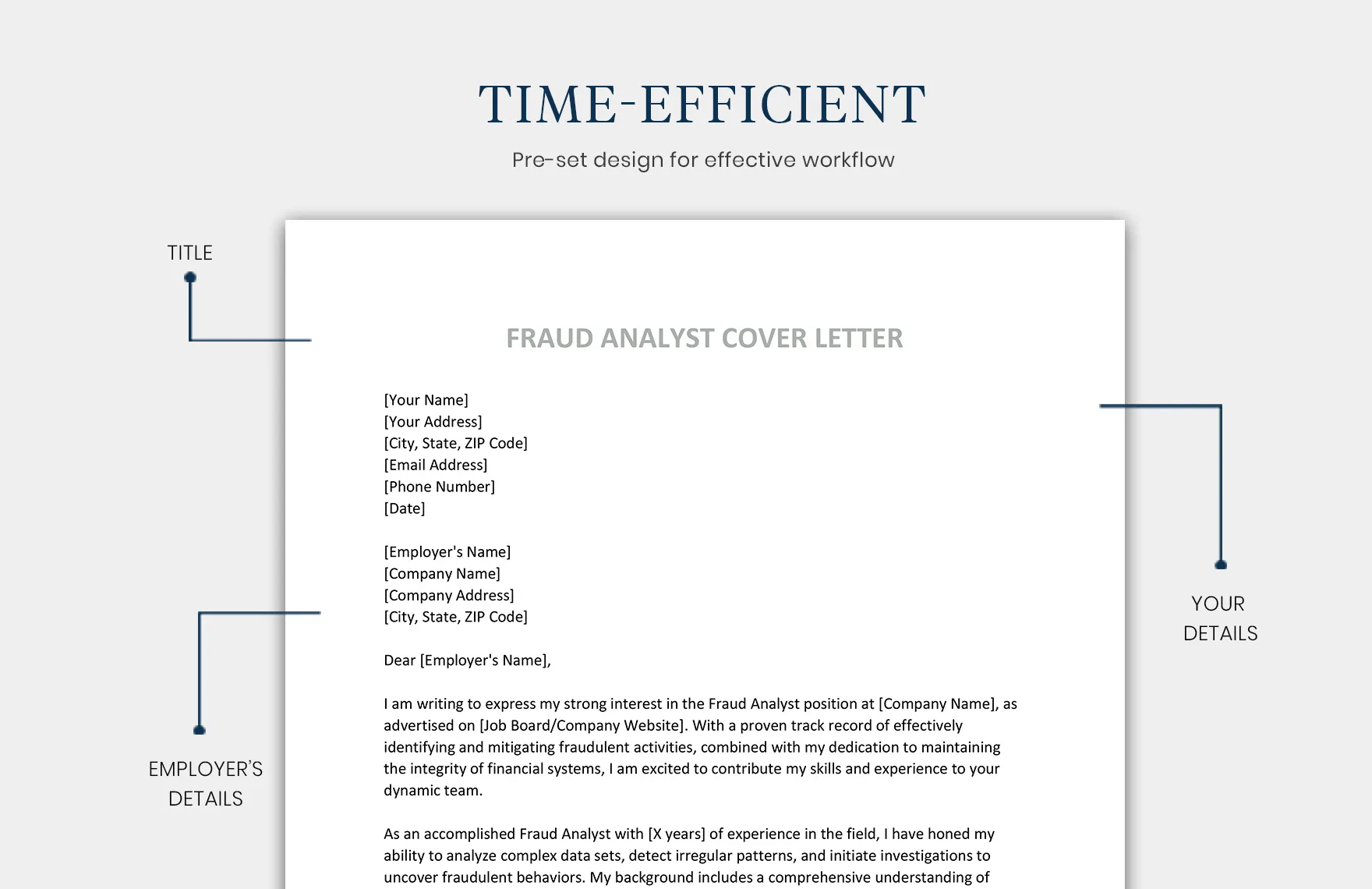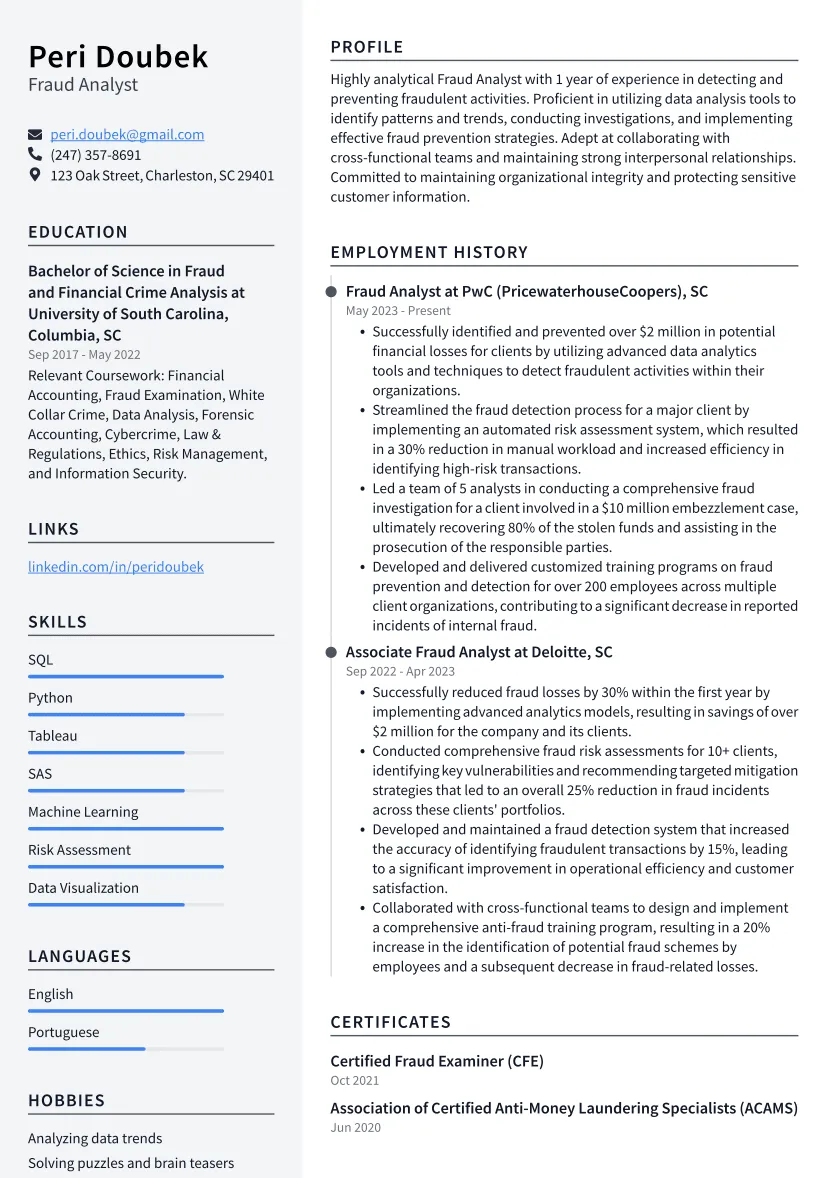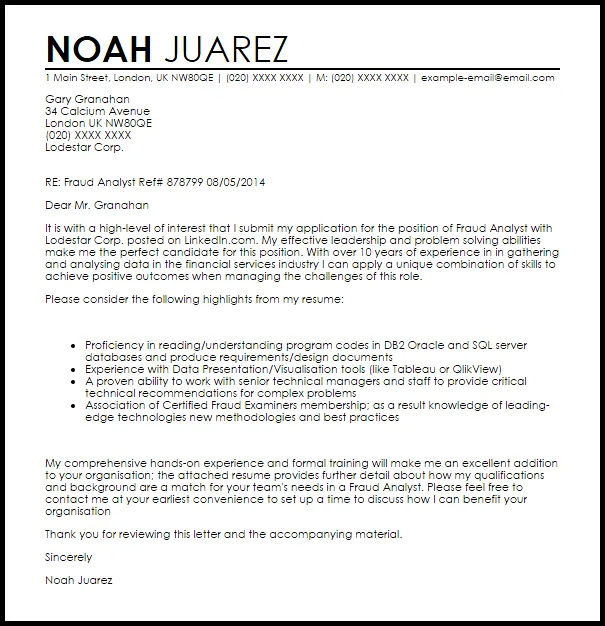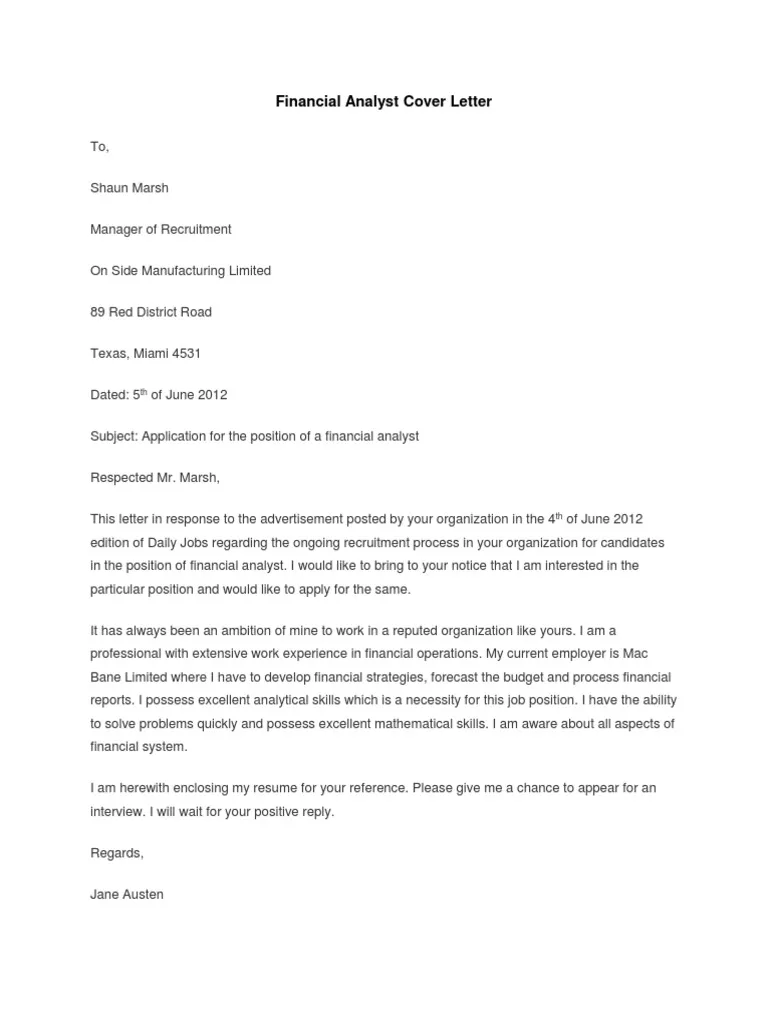A compelling fraud analyst cover letter is your first opportunity to make a strong impression on potential employers. It is a critical document that can significantly increase your chances of landing an interview. With the right approach, your cover letter will not only showcase your skills and experience but also demonstrate your enthusiasm for the role and the company. This guide provides the top 5 tips to help you create a standout fraud analyst cover letter that gets results.
Key Elements of a Fraud Analyst Cover Letter
A well-structured cover letter includes several key elements that work together to present you as the ideal candidate. Start with a professional header that includes your contact information, the date, and the hiring manager’s name and title (if known). The salutation should be formal and addressed to the hiring manager or the relevant department. The body of the letter is where you demonstrate your qualifications, enthusiasm, and fit for the role. Finally, a strong closing with a call to action will encourage the employer to contact you. Make sure to proofread your letter carefully for any errors in grammar or spelling, as this reflects professionalism and attention to detail. A well-crafted cover letter creates a solid foundation for your application.
Highlighting Your Skills
In your cover letter, emphasize the skills most relevant to the fraud analyst position. This includes analytical skills, attention to detail, problem-solving abilities, and a strong understanding of financial regulations and fraud detection techniques. Be specific about the skills you possess and how you have used them to achieve results in previous roles. For instance, if you have experience with data analysis, mention specific tools or techniques you are proficient in, such as SQL, Python, or data visualization software. If you have experience with fraud detection, describe the types of fraud you have encountered and the methods you used to identify and prevent them. Tailoring your skills to match the job description demonstrates your suitability and helps the hiring manager quickly see your value.
Quantifying Achievements

Don’t just list your responsibilities; quantify your accomplishments to make a stronger impact. Use numbers and data to show how you have made a difference in previous roles. For example, instead of saying ‘Improved fraud detection processes,’ state ‘Reduced fraudulent transactions by 15% within six months by implementing a new detection system.’ Use metrics to demonstrate your efficiency and the value you bring to an organization. By providing concrete examples and measurable results, you create a clear picture of your capabilities and the positive impact you can make in the role of a fraud analyst. This approach provides solid evidence of your past successes.
Tailoring the Letter to the Job
Customize your cover letter for each job application. Carefully review the job description and identify the key requirements and keywords. Then, tailor your letter to highlight the skills and experiences that align with those requirements. Show the hiring manager that you understand the specific needs of their organization and how you can contribute to their goals. For example, if the job description emphasizes experience with a particular fraud detection software, make sure to mention your proficiency with that software. Avoid sending a generic cover letter; instead, invest time in personalizing each application to make it relevant and compelling. This attention to detail demonstrates your genuine interest in the position and the company.
Formatting and Presentation
The formatting and presentation of your cover letter are just as important as its content. Choose a professional font, such as Times New Roman, Arial, or Calibri, and ensure that the text is easy to read. Use clear and concise language, avoiding jargon or overly complex sentences. Break up large blocks of text into smaller paragraphs to make the letter more visually appealing. Maintain consistent formatting throughout the document, including margins, spacing, and bullet points if used. Proofread your cover letter carefully for any errors in grammar or spelling. A well-formatted and error-free cover letter reflects your professionalism and attention to detail, making a positive impression on the hiring manager.
Showcasing Relevant Experience

Highlight your relevant experience to showcase your ability to perform the duties of a fraud analyst. Describe your previous roles, focusing on the fraud-related responsibilities you held. Provide specific examples of how you have used your skills to detect, prevent, and investigate fraud. Be sure to mention any relevant software, tools, or techniques you have used, such as data analysis tools, fraud detection software, or investigative methods. For each experience you list, explain your achievements and the results you achieved, quantifying your impact whenever possible. This demonstrates your ability to contribute to fraud prevention and detection efforts.
Fraud Detection and Prevention
Detail your experience in fraud detection and prevention. Describe the types of fraud you have encountered, such as credit card fraud, identity theft, or internal fraud. Explain the methods you used to identify and prevent fraudulent activities, such as reviewing transactions, analyzing data, and conducting investigations. If you have experience with fraud detection software or systems, mention them specifically. Highlight any initiatives you have implemented to improve fraud prevention, such as developing new detection rules or training employees on fraud awareness. Focus on the successful outcomes of your fraud detection and prevention efforts, demonstrating your ability to protect the organization from financial losses and reputational damage.
Data Analysis and Reporting
Emphasize your data analysis skills. Fraud analysts rely heavily on data analysis to identify patterns, trends, and anomalies that may indicate fraudulent activity. Describe your experience with data analysis tools and techniques, such as SQL, Excel, or data visualization software. Highlight your ability to analyze large datasets, identify key insights, and create reports that communicate your findings to stakeholders. Mention any experience you have with fraud analytics, such as developing predictive models or creating dashboards to monitor fraud trends. Showcase your ability to transform raw data into actionable intelligence, demonstrating your analytical capabilities and your contribution to fraud prevention efforts. Focus on the positive outcomes of your analysis.
Compliance and Regulations

Demonstrate your knowledge of compliance and regulations relevant to fraud detection and prevention. Mention any experience you have with compliance frameworks, such as SOX, GDPR, or industry-specific regulations. Describe your understanding of regulatory requirements and how you ensure compliance in your work. Highlight your ability to develop and implement policies and procedures that align with regulatory guidelines. If you have experience with fraud investigation and reporting, describe your approach to handling sensitive information and reporting fraud incidents to the appropriate authorities. Your commitment to compliance shows that you understand the importance of maintaining ethical standards and protecting the organization from legal and financial risks.
Demonstrating Enthusiasm and Fit
Expressing your enthusiasm and demonstrating your fit for the role and the company is crucial to making a strong impression. Your cover letter is an opportunity to show the hiring manager that you are truly interested in the position and eager to contribute to the organization’s success. Expressing your interest in the role, explain why you are excited about the opportunity, and how your skills and experience align with the company’s needs and values. Show the hiring manager you share the organization’s goals.
Researching the Company
Demonstrate your genuine interest in the company by researching it beforehand. Learn about the company’s mission, values, and recent achievements. Identify how your skills and experience align with the company’s goals and how you can contribute to their success. Mention specific initiatives or projects that interest you and how you can contribute to them. Showing that you have taken the time to learn about the company demonstrates your commitment and helps you stand out from other applicants. Tailor your cover letter to align with the company’s values and express your enthusiasm for the role. This targeted approach shows you are invested in the company’s success.
Expressing Your Career Goals

Include a brief statement about your career goals and how the fraud analyst position aligns with your aspirations. Express your enthusiasm for the opportunity to grow and develop your skills within the company. Show the hiring manager that you are committed to building a successful career and that you are eager to contribute to the team. Mention any areas of fraud analysis that particularly interest you and how you hope to expand your expertise. Your clear career goals demonstrate your long-term commitment and ambition. A well-articulated career goal shows you’re a motivated individual who understands the role’s importance.
Making a Strong Impression
By following these tips, you can create a compelling fraud analyst cover letter that captures the attention of the hiring manager and increases your chances of landing an interview. Remember to highlight your key skills and experiences, quantify your achievements, and tailor your letter to each job application. Be sure to proofread your letter carefully for any errors in grammar or spelling. Make a strong impression by expressing your enthusiasm and demonstrating your fit for the role and the company. This will highlight your value and set you apart from other candidates, leading to a successful job search.
Good luck with your job applications!
